Why is the pressed powder extracted from espresso wet? Does the status of Italian-style pressed powder concentrate matter?
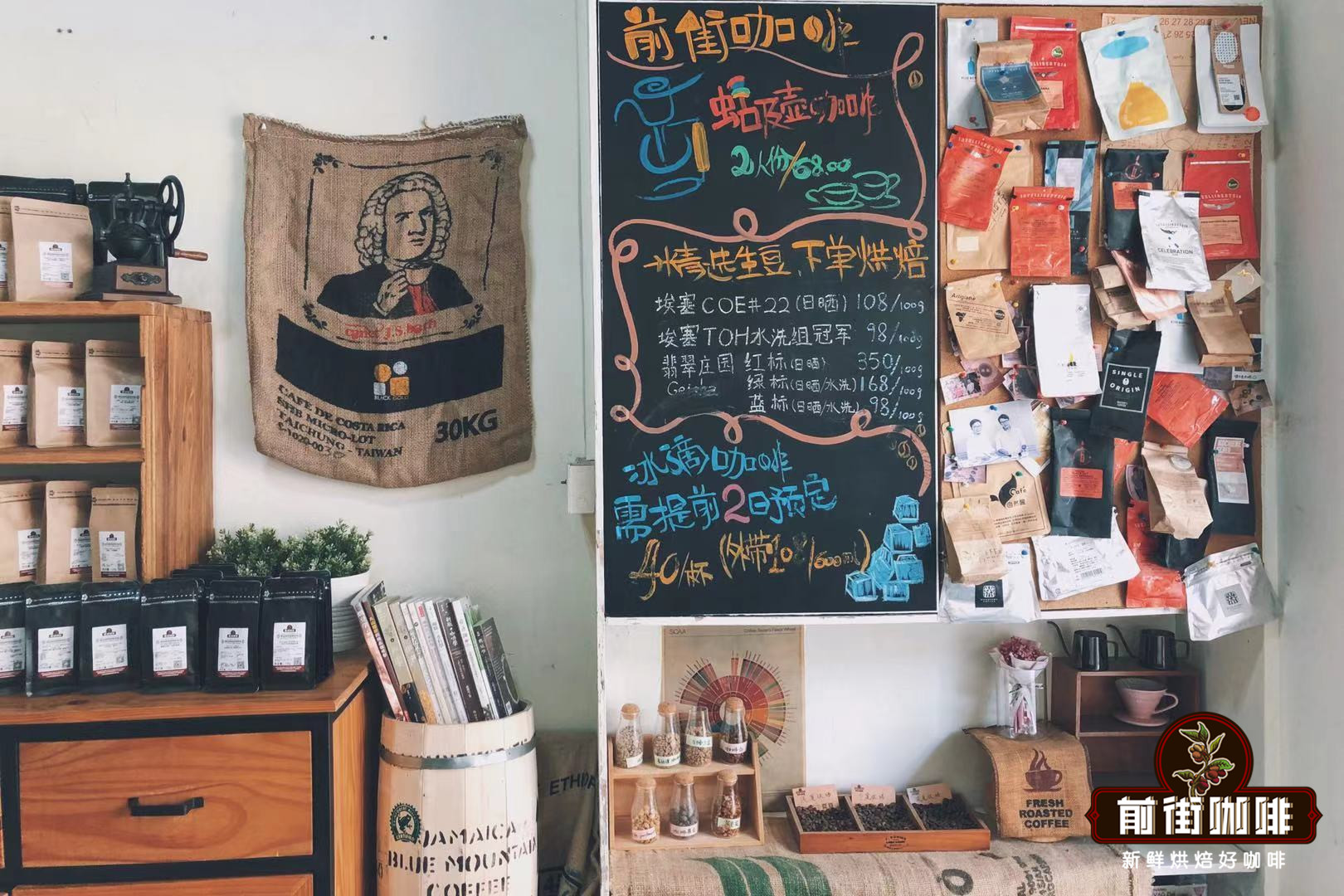
Professional coffee knowledge exchange More coffee bean information Please pay attention to coffee workshop (Weixin Official Accounts cafe_style)
Coffee lovers who have extracted espresso coffee at home know that there will be a whole coffee cake on the powder bowl after extraction, and this wet coffee cake can also be seen from the side whether this cup of espresso has been extracted successfully, then the next article is about Italian coffee extraction and Italian espresso powder cake status.
What does the espresso powder state indicate if it is too wet?
According to Front Street Coffee practice, if the coffee cake is too wet, it is possible that the coffee is too finely ground or not extracted enough, or the coffee machine is not pressurized enough. Because the home-style semi-automatic coffee machine although claimed to have 15 atmospheres of pressure. But it's usually not enough. And there's no vapor reflux, so the coffee cake gets a little wet.
But if the extracted coffee tastes OK, you don't have to worry about the powder cake being too wet and too watery, which Front Street Coffee thinks is not a problem at all, because brewing espresso requires water. Water permeates coffee from the top down: it passes through a boiler, a brewing head and a water trap before dripping onto the grounds. As soon as you start the pump, water fills the gap between the coffee powder and the moisture mesh, and then flows into and soaks the coffee powder.
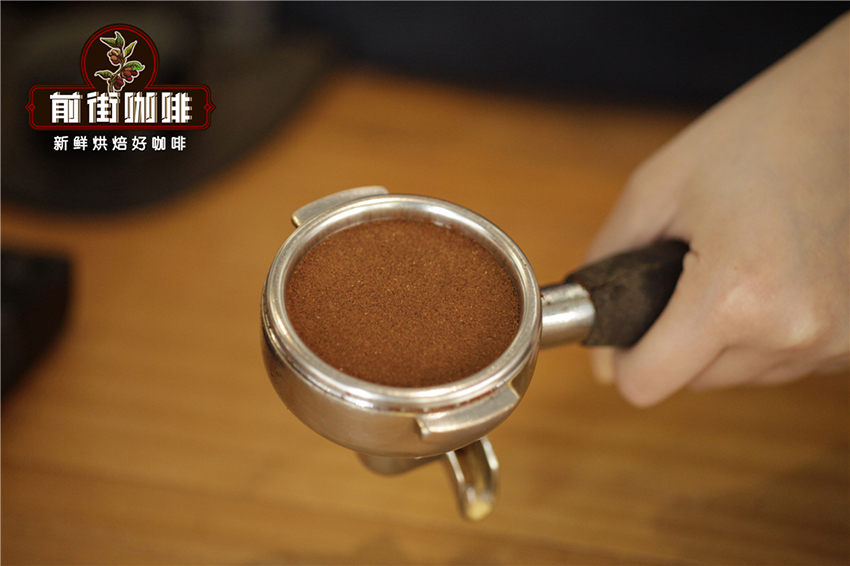
At this stage, water is everywhere, whether it is above the coffee powder, coffee powder and coffee powder. As soon as you turn off the pump, a valve inside the coffee maker opens to relieve pressure. Water doesn't compress under pressure, so there's not much water escaping, just staying on top of and in the coffee powder. When there is no pressure, there is no force to push the water out of the powder bowl, and there is no force to push the water up the brewing head. The water is "stuck" in the pink bowl.
If you quickly remove the brew handle after extraction, you will notice a pool of water slowly seeping down into the coffee grounds. After a few seconds the coffee powder absorbs all the water.
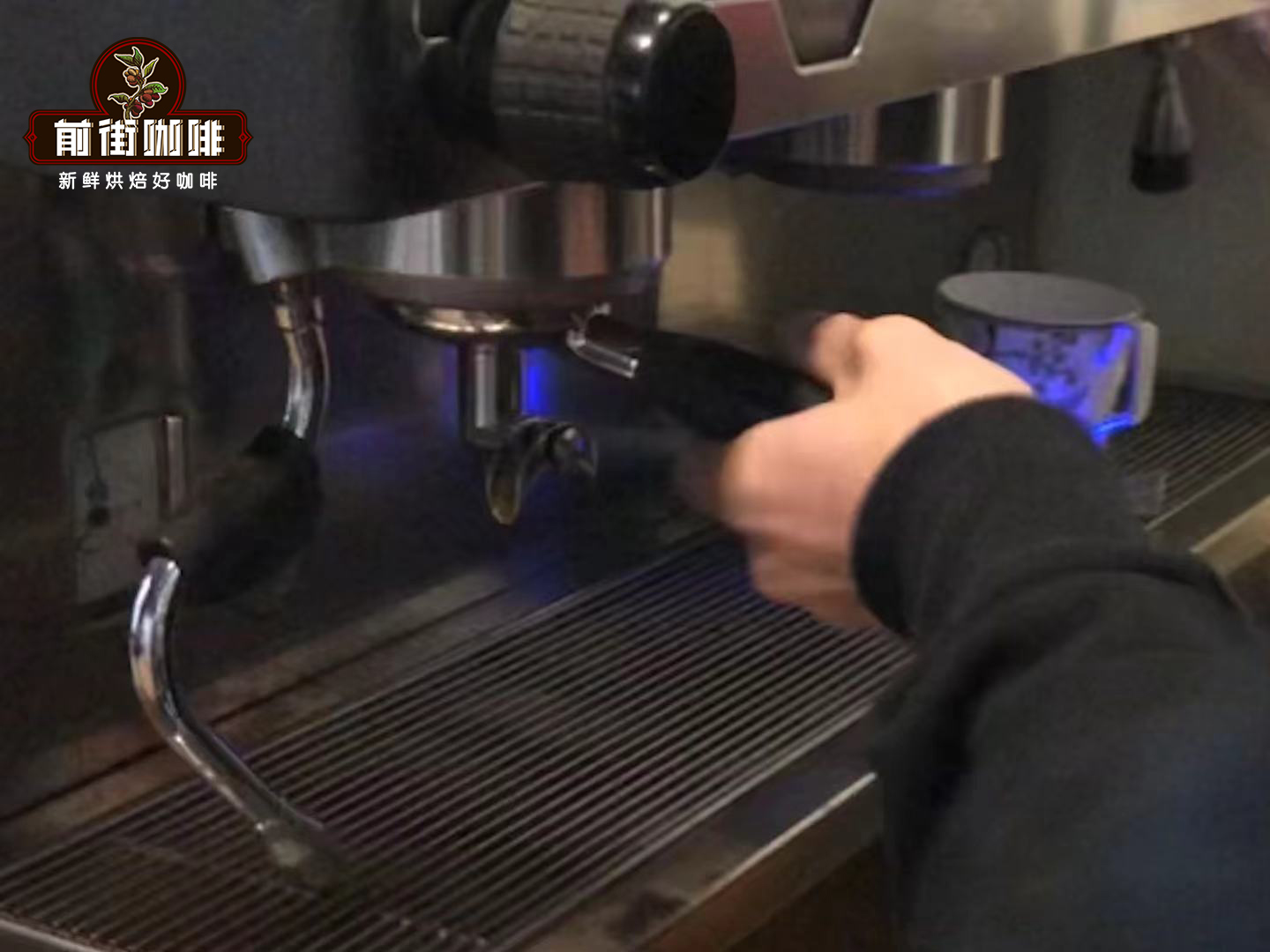
The larger the gap between the coffee powder and the net, the more water remains. And the more water remains, the wetter and more watery your powder will be. The conclusion is that the less coffee powder and more water, the wetter the cake. Conversely, when there is more coffee powder and less water, the drier the cake.
How do you make espresso?
At present, almost all the Italian coffee that can be seen on the market is made of espresso and milk in different proportions, such as mocha, latte, cappuccino and other coffee in the front street coffee shop, so the most important step in making Italian coffee is to make Italian espresso.
Front Street Coffee Extraction Making Espresso Parameters Sharing:
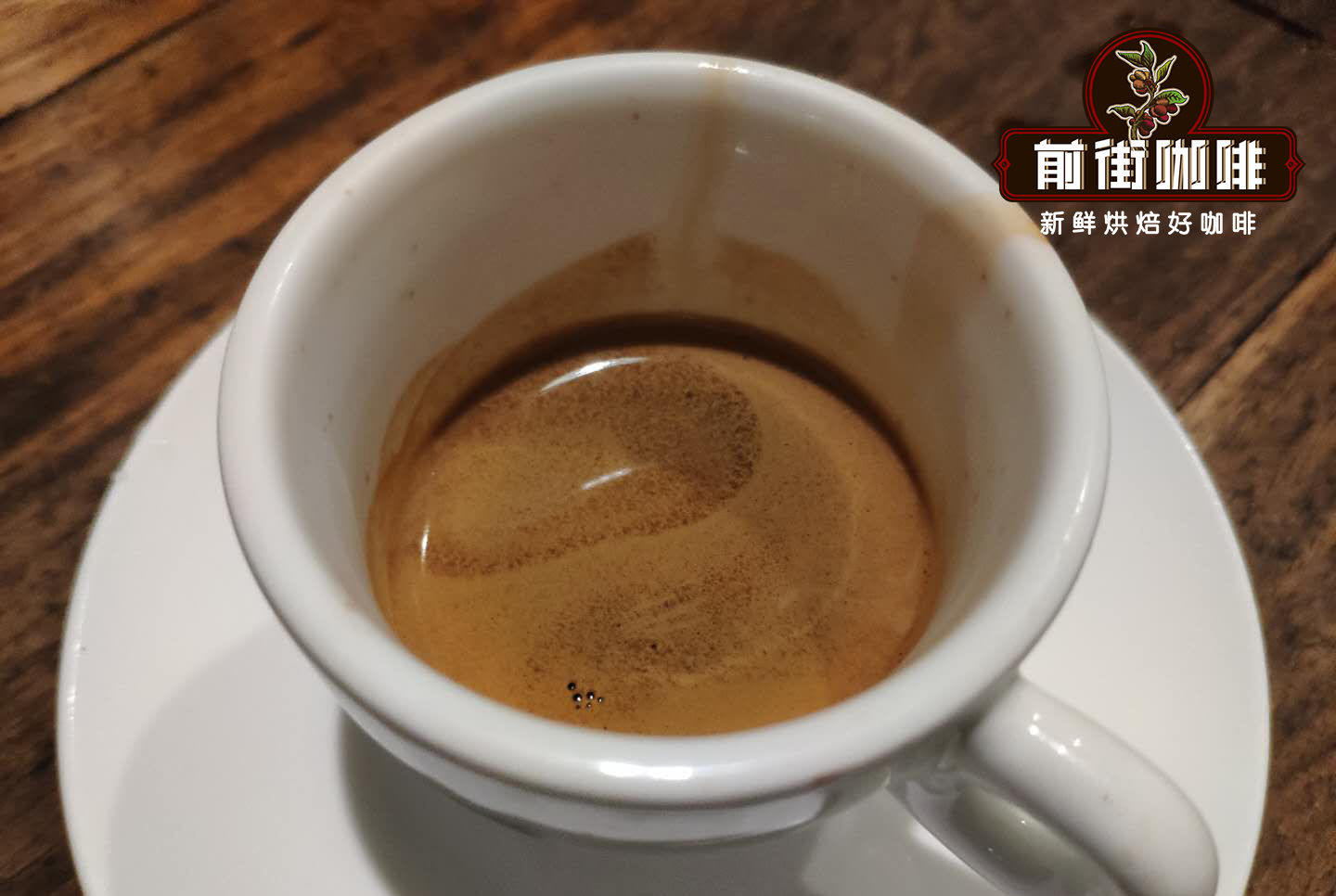
Front Street uses a Pegasus E98 espresso machine with the following extraction parameters:
Pressure: 9 bar±2
Temperature: 90.5~96°C
Time: 20~30 sec
Powder water ratio: 1:1.7~1:2
Powder: 12g (single espresso) 20g (double espresso)
Extraction concentration: 20ml (single portion) 40ml (double portion)
What is espresso?
Espresso, also known as Espresso, is a beverage made by forcing a high-pressure stream of near-boiling water through finely ground coffee. Espresso is generally thicker than coffee made by other methods, and contains higher concentrations of suspended matter and dissolved solids, such as coffee fat (a creamy foam) on the surface. Because of its pressurized manufacturing process, Espresso has a strong taste and a very high concentration of chemicals. Often used as a base for other beverages such as lattes, cappuccinos, mocha, and American coffee. But there are also many coffee fans in the front street coffee shop who like to have a cup of espersso directly and feel its mellow and smooth flavor.
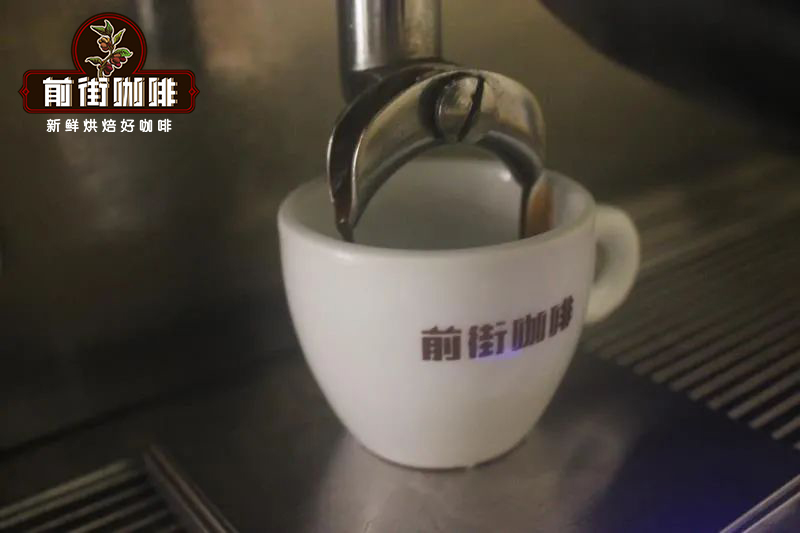
Other than that, some espressos are made with a single shot, some are made with a double shot, so what does a double shot mean? What's in an espresso? The following front street coffee comes to answer for coffee lovers one by one.
Single double espresso difference
According to Qianjie Coffee, the difference between single and double espresso coffee is mainly in concentration, such as the proportion of single espresso extraction in Qianjie Coffee Shop is about 10 grams of coffee powder, and the proportion of double espresso extraction is about 20 grams of coffee powder, but the final coffee capacity is 30 ml. Single espresso uses a single powder bowl and a single mouth handle to extract a single espresso at a time, and double espresso uses a bottomless powder bowl, bottomless handle or handle to extract double espresso at a time."
But Front Street Coffee knows espresso coffee as tiny droplets of oil beneath the foam, dissolving sugar, acid protein and caffeine. There are bubbles and solid solutions suspended on the foam surface, so the wear of the grinder blade will slowly change with humidity and storage time, so adjust the grinding degree every day to ensure that the espresso flavor is stable.
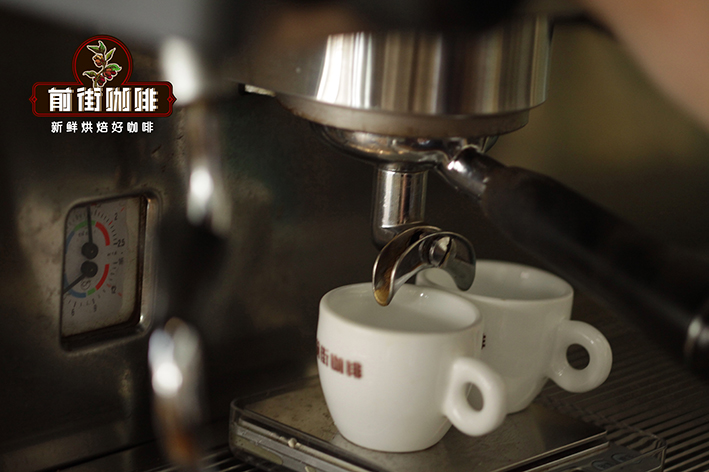
espresso powder water ratio
Espresso is important because it directly affects the quality of a cup of coffee. The right ratio of espresso powder to water is the key to making good espresso coffee, so Front Street Coffee will briefly talk about the ratio of espresso powder to water, and see how to adjust it to achieve the right ratio of powder to water.
Traditionally, 8-9 grams of coffee powder is used in a single serving and extracted for 30 seconds to produce 25-35 ml of espresso. The ratio of powder to water in a single serving is 1:1, which is the traditional ratio and the ratio that has been used for the longest time. A single concentrated taste is fragrant and difficult for most people to eat. An important step in powder weighing is weighing, placing the coffee handle on the scale for zeroing, weighing about 9g of coffee powder, and extracting 25-35g of espresso in 25 - 35 s is regarded as the appropriate powder-water ratio. Espresso is the usual cappuccino powder, equal proportions of milk, espresso and foam, depending on the cup, the traditional ratio is 1:1:1
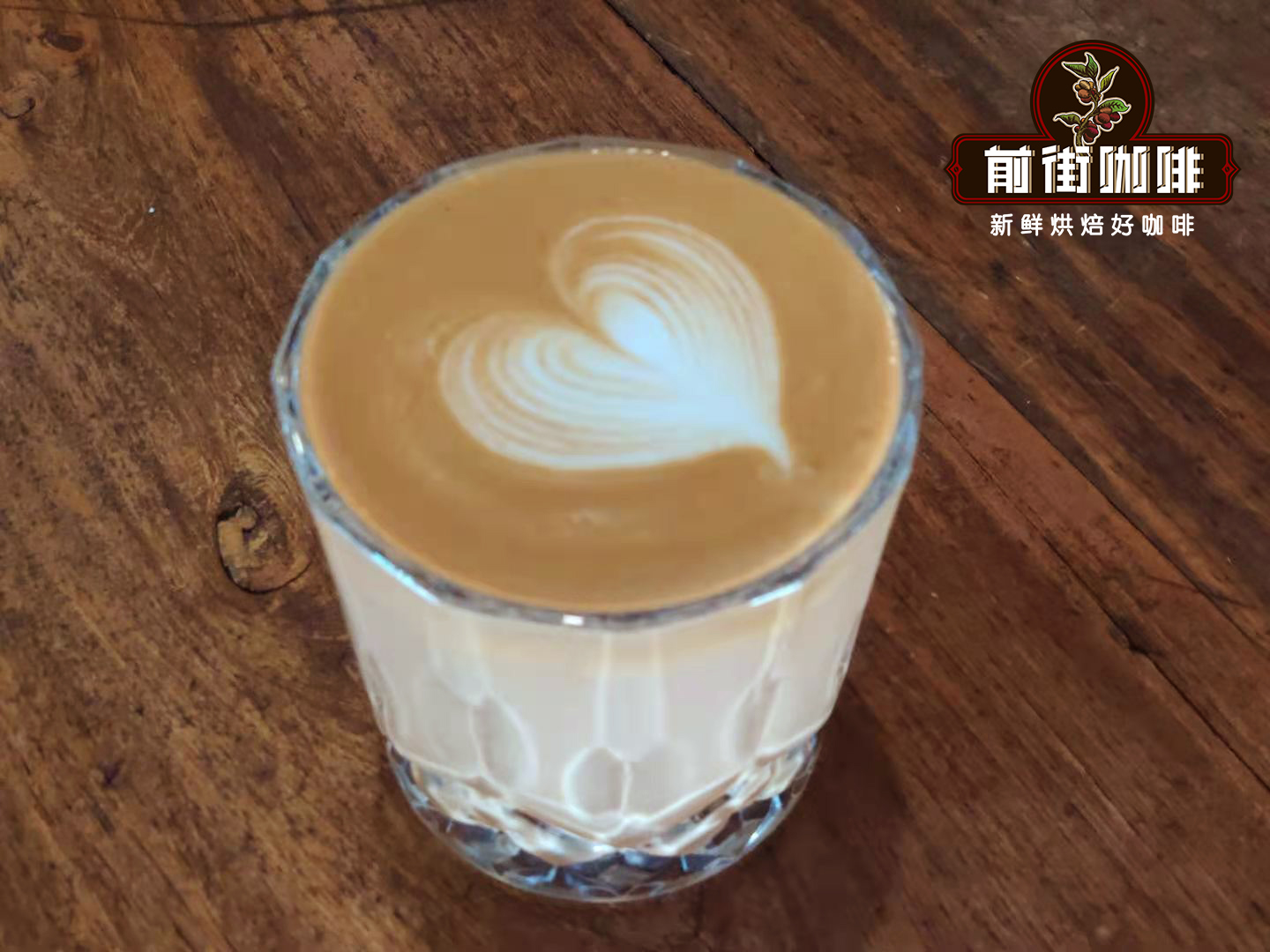
Double espresso is of course doubled on the basis of a single serving, 18-20g of powder is also extracted in the same 25-35s time, 55-65g of espresso, regarded as the appropriate powder water ratio, the ratio is 1:1. The same operation involves weighing to zero. Double espresso is the main amount used to make lattes and americas. In the taste than a single serving more rich and heavy, because to add milk and water, diluted concentration in exchange for mellow cotton smooth taste, a single serving will make the coffee taste insufficient, so double espresso depends on the cup capacity.
How to determine how much powder to use, the above is the traditional single, double espresso powder. The coffee powder bowl has different specifications, and the filling capacity of a single powder bowl is as much as 14g, which is adjusted according to the baseline in the powder bowl. There is a concave powder line in the powder bowl, which is the reference line for the specified powder amount. The powder amount filled can be adjusted according to the reference line. Exceeding the reference line is excessive, and it may also cause large gaps between powder particles due to excessive grinding.
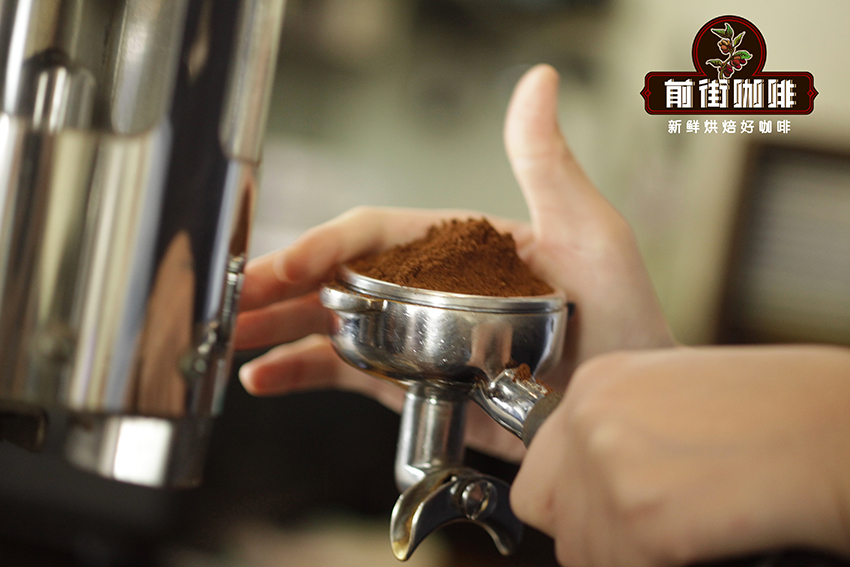
Weighing can accurately achieve a reasonable powder-water ratio. The grinding degree of espresso coffee is flour-like thickness. The grinding scale is usually the minimum number of Italian grinder. It is adjusted between 1-1.5. It is mainly adjusted by powder amount and extraction time. It is an accurate way.
What coffee beans are used for espresso?
In addition, the coffee flavor presented by using different Italian coffee beans to make espresso coffee will also be different. For example, the Italian coffee beans used in the Front Street Coffee Shop are made of Honduran sherry coffee and yejia sherry sun-dried red cherry coffee, which are blended into milk to highlight the rich chocolate, caramel and slightly drunk flavor.
Because the Italian coffee machine has a very distinct feature is that it will amplify the original flavor of coffee beans, and the acid of lightly roasted coffee beans itself will be more prominent, if the Italian coffee machine extracts the acid will be more obvious, so it is not suitable for making Italian coffee.
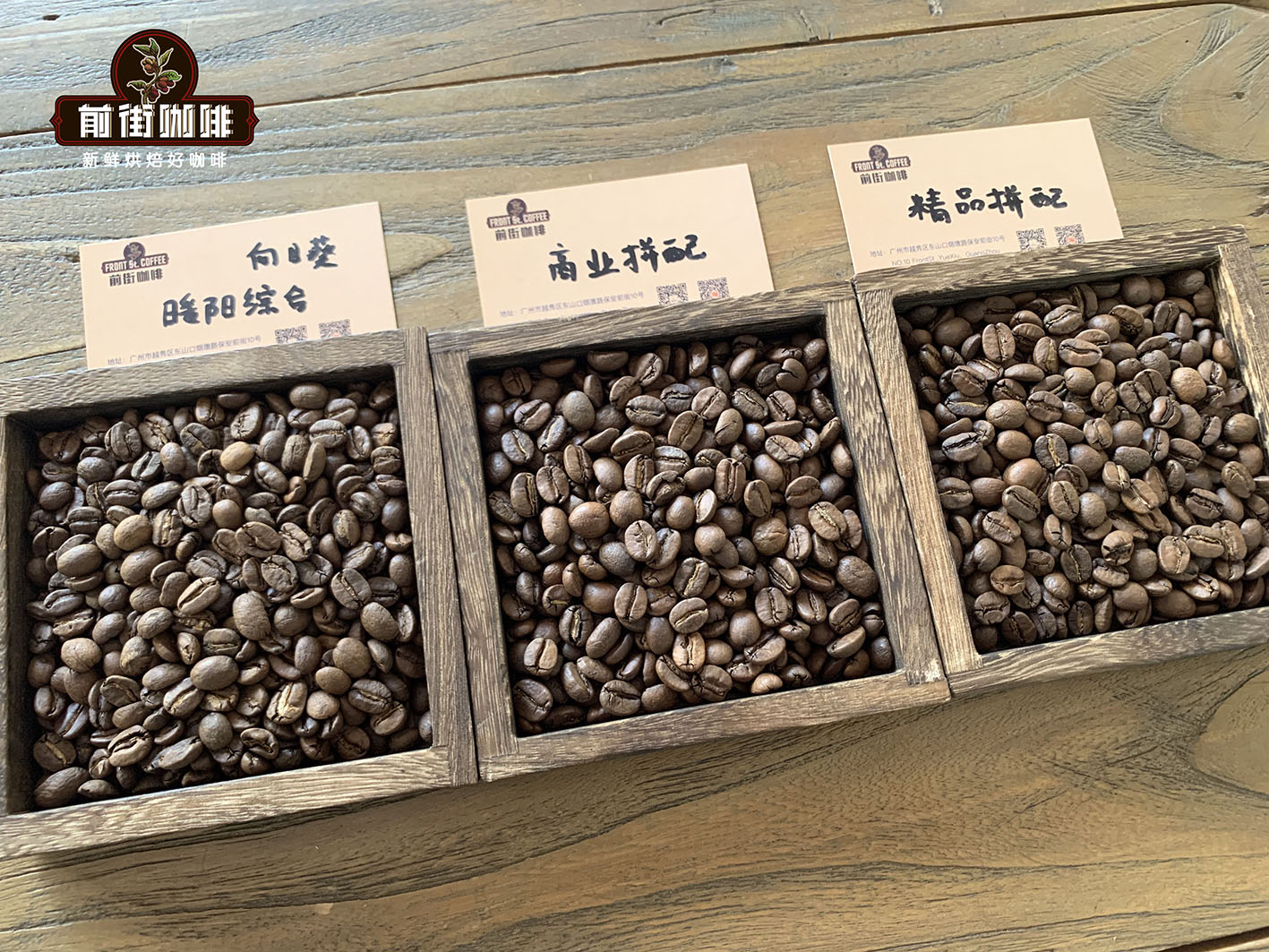
Next, Front Street Coffee recommends the following four Italian coffee beans for everyone to choose from.
Qianjie Coffee Sunflower Warm Sun Matching
Flavor: Distinct acidity, light berry aromas, wine bouquet, rich chocolate flavor, clear sweetness.
Recipe: Honduras Shirley: Yega Red Cherry =6:4
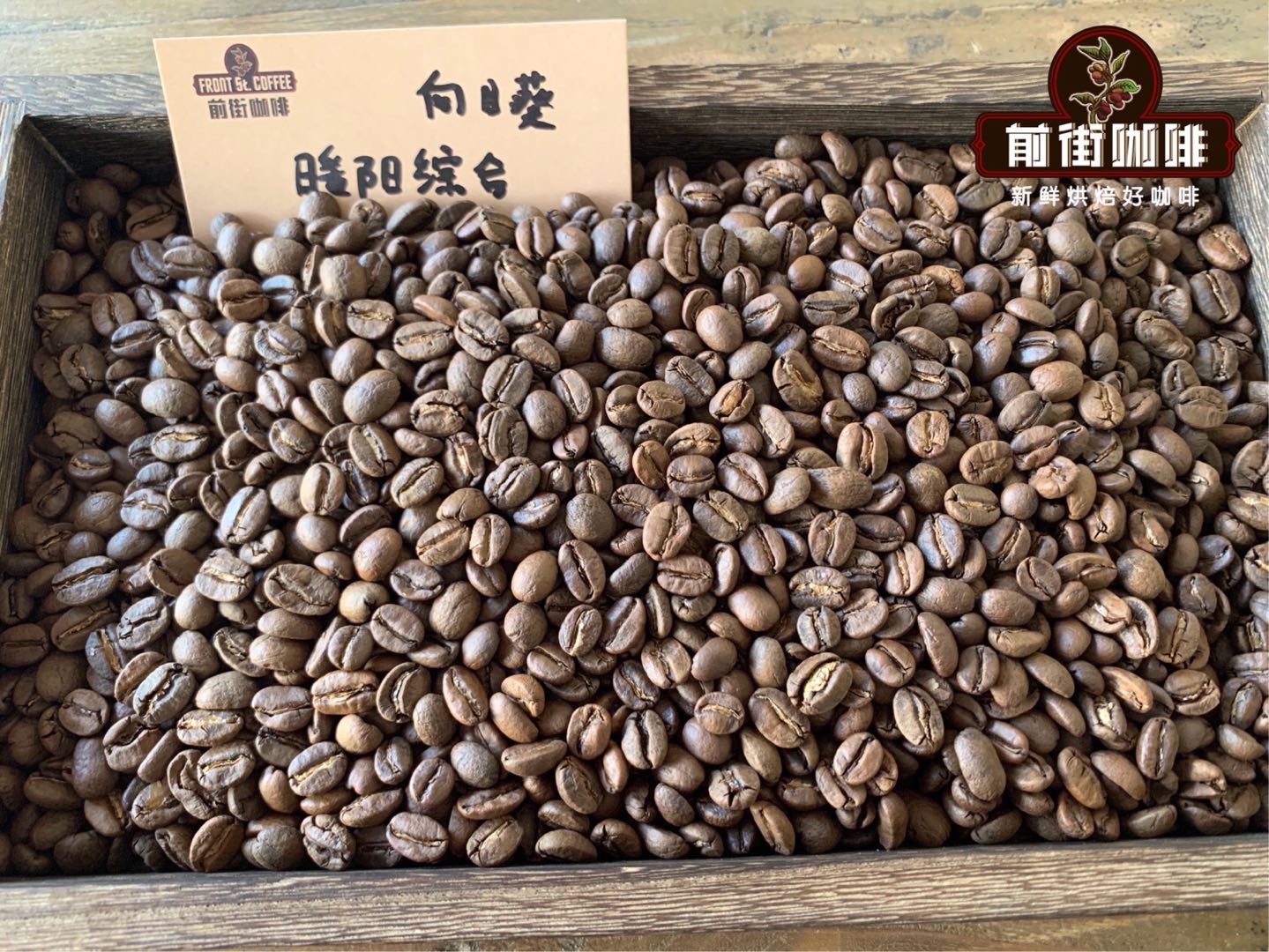
This blend front street is made of yejia sherry sun red cherries and honduran sherry. Front Street's design concept for this blend is Italian and hand punch can be used. It is used to make espresso when the flavor emitted by the obvious fermentation of wine, citrus and berry taste on the mouth of the acid immediately emerged, with whiskey aroma, aftertaste is dark chocolate.
Qianjie Coffee Boutique Pinpei
Flavor: Soft and slightly sour, sweet, nutty and sweet, overall feeling is not too stimulating, mild, oil belongs to medium.
Formula: Colombia: Brazil =3:7
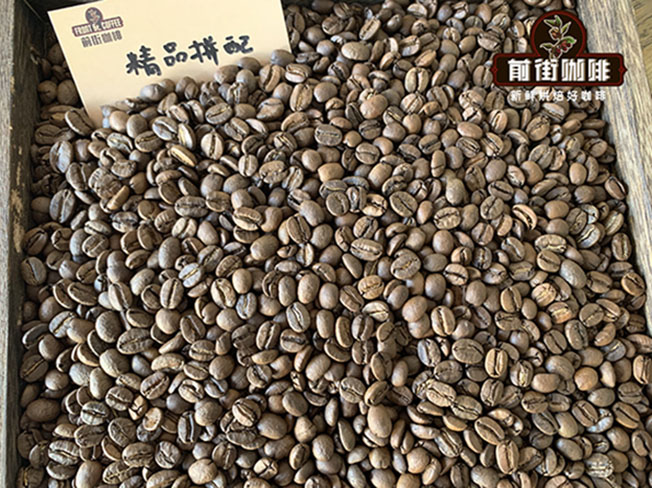
This blend of Brazil and Colombia has a light aroma of baked grass, a slightly bitter fragrance, a smooth, sweet finish and a pleasant finish. This is because coffee beans from Colombia Cymbidium have a pleasant sour taste, a mellow smell, moderate acidity, and a rich sweetness that is very resistant.
The coffee beans from Brazil's Xilado region have a pleasant sweet and bitter taste and a smooth entrance. So it's a perfect match.
Qianjie Coffee Business Pinpei
Flavor: caramel sweetness, nutty and cocoa, dark chocolate flavors, sour and sweet balance, slightly bitter, lingering finish.
Recipe: Colombia: Brazil: Robusta =3:6:1

This blend features Brazilian, Colombia and 10% Robusta coffee beans. Classic taste, front street thinks this blend tastes rich fat and taste and caramel sweetness, but also with nuts and cocoa, dark chocolate flavor, sweet and sour balance, slightly sweet and bitter, lasting finish. This commercial blend uses the same Colombia and Brazilian coffee beans as the Front Street Coffee Boutique blend, but with the addition of Robusta to provide a rich fat, making the coffee taste more mellow.
Qianjie Coffee Basic Blending
Flavor: With soft fruit acids, caramel sweetness, nutty, dark chocolate flavor, smooth and viscous, but taste light.
Formula: Yunnan: Brazil =3:7
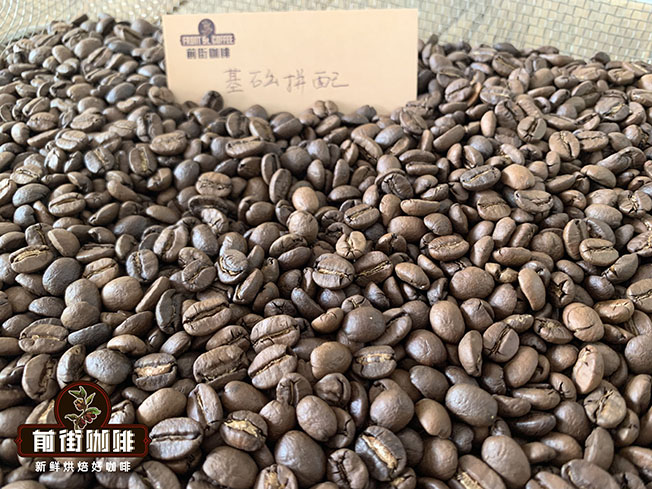
This blend front street uses Brazil and Yunnan to blend, front street thinks tastes with soft fruit acid and caramel sweetness, as well as nuts, dark chocolate flavor, smooth and thick, but taste light. This is because Yunnan's natural conditions are very similar to those of Colombia, with high altitude, large temperature difference between day and night, mellow flavor, moderate sour taste, rich flavor, uniform particles, rich oil and fruity fruit. Its quality and taste are similar to those of Colombia coffee. But it's still slightly lighter than Colombia, while Brazil's Cilado coffee beans have a pleasant sweet and bitter taste and a smooth taste. Therefore, the flavor of these two kinds of coffee beans is also good, and this basic blend coffee bean is very cost-effective, suitable for Italian beginners and small coffee shops.
The above is the relevant information about conscious espresso organized by Front Street Coffee, hoping to help coffee lovers understand more about Italian coffee.
More fine coffee beans, please add private WeChat Qianjie Coffee, WeChat: kaixinguoguo0925
Important Notice :
前街咖啡 FrontStreet Coffee has moved to new addredd:
FrontStreet Coffee Address: 315,Donghua East Road,GuangZhou
Tel:020 38364473
- Prev
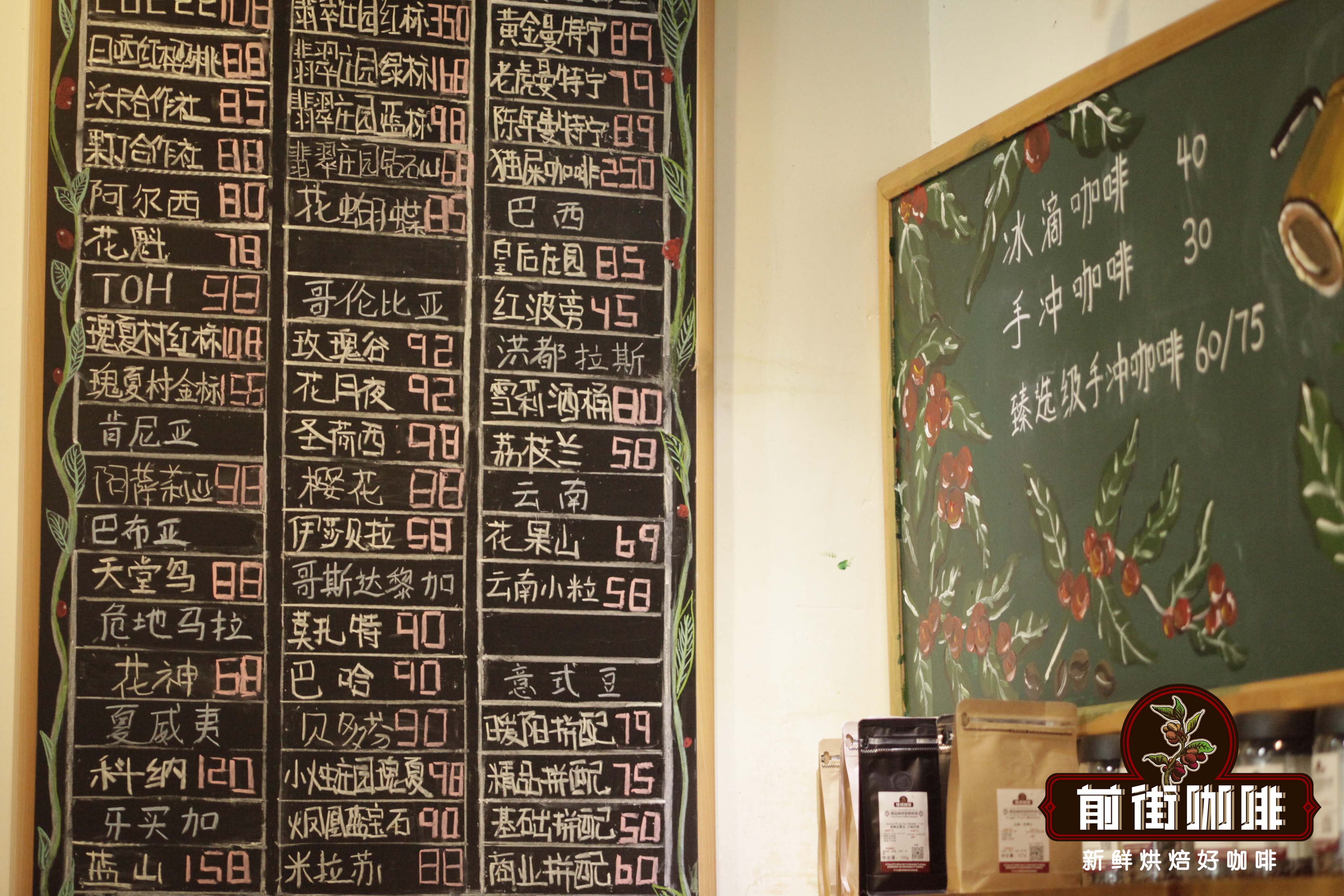
How strong is the powder pressing of espresso? Leveling skills of coffee powder filled with extracted Italian coffee
Professional coffee knowledge exchange more coffee bean information please follow the coffee workshop (Wechat official account cafe_style) to make a good espresso, the key lies in the details before extraction, such as using the weight to control the amount of powder extracted, or placing a weighing coffee liquid on the leach pan to control the powder ratio of the extracted coffee, and then adjust the research according to this parameter.
- Next
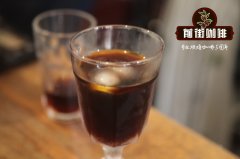
Coffee tips: how to simply order a cup of coffee
Professional coffee knowledge exchange more coffee bean information please follow the coffee workshop (Wechat official account cafe_style) Black Coffee (Black coffee): this kind of coffee will give you a very primitive feeling, it is without sugar or milk, baked with coffee beans. The taste is slightly bitter, but the slow product will feel a little fragrant. Espresso (Espresso): coffee
Related
- Beginners will see the "Coffee pull flower" guide!
- What is the difference between ice blog purified milk and ordinary milk coffee?
- Why is the Philippines the largest producer of crops in Liberia?
- For coffee extraction, should the fine powder be retained?
- How does extracted espresso fill pressed powder? How much strength does it take to press the powder?
- How to make jasmine cold extract coffee? Is the jasmine + latte good?
- Will this little toy really make the coffee taste better? How does Lily Drip affect coffee extraction?
- Will the action of slapping the filter cup also affect coffee extraction?
- What's the difference between powder-to-water ratio and powder-to-liquid ratio?
- What is the Ethiopian local species? What does it have to do with Heirloom native species?

